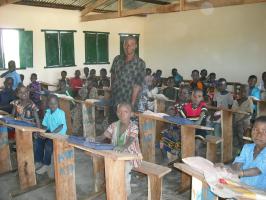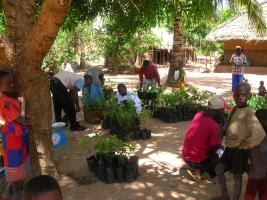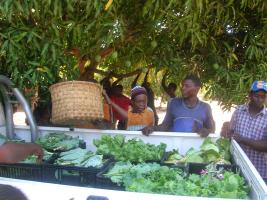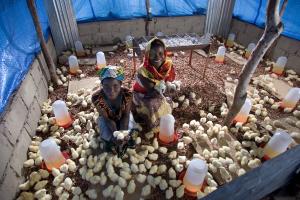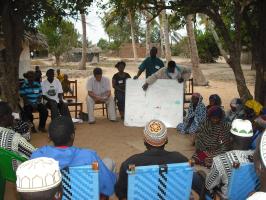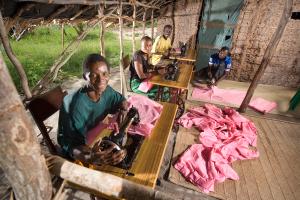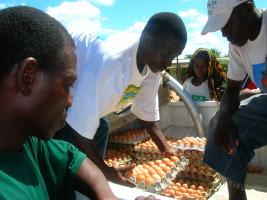EIB-financed mine project in Mozambique wins Corporate Social Responsibility and Socio-Economic awards
Extractive industry and mining projects are often complex and challenging. But they can also be prime ways of adding value to indigenous natural resources, increasing export revenues and generating fiscal income for the countries where they are located through royalties and corporate taxes.
In some countries, notably in the Africa, Caribbean and Pacific (ACP) regions, mineral resources represent the most significant means available for their economic development. Moreover, these projects can create permanent direct and indirect jobs and provide training that contributes to local skills. Nevertheless, the general public is usually unaware of these benefits, as well as of the socio-economic development of local communities often associated with such projects.
CSR awards
Within this context, the EIB has welcomed the announcement that one of the mining projects financed by the bank, the Moma Titanium minerals mine in northern Mozambique, has recently won two major Corporate Social Responsibility (CSR) and Socio-Economic awards.In September 2009, Kenmare Resources plc, owners and operators of the Moma Titanium mine, won the President's Award for the best International CSR Programme from the Chambers of Commerce of Ireland, in association with the Irish Government Department of Community Affairs, for the Kenmare Moma Development Association (KMDA).
In October 2009, KMDA also won another prestigious award for its activities aimed at social and economic enhancement of the communities surrounding the mine. The Nedbank Socio-Economic Award was made by a panel of independent and expert adjudicators following an interview and three day site visit to examine the work of KMDA and meet with project beneficiaries. Nedbank particularly praised the fact that KMDA's development work began before mining commenced, that it has an overall strategic vision and a ‘bottom up' approach, as well as close partnerships with international and local Non-Governmental Organisations and Government bodies.
Community relations and development
Founded by Kenmare in 2004, KMDA's goal is to strengthen the socio-economic development of the communities in the vicinity of the Moma mine, a population of 10 000 people. With the support of local and international partner institutions, KMDA has established small businesses in egg, broiler and vegetable farming generating revenue of USD 150 000 a year across six villages.
In addition, KMDA also set up a mobile health clinic with a visiting general practitioner and dentist, introduced projects on food security and HIV/health, built four new schools, set up a savings and credit scheme, installed water pumps and initiated a soccer league. While there is a still a great deal of work to do, there is not a family in the area whose lives have not benefited in some way from KMDA's programme.
EIB support
The EIB financed the Moma Titanium project in 2004 and 2005 with loans totalling EUR 57 750 million; and this was one of the first projects to be financed under the then recently created EIB Investment Facility.
The Bank's mandate under the Cotonou Agreement, which governs EIB lending in the ACP, clearly recognizes that mining plays an important role in achieving both the eradication of poverty and sustainable development goals as set out in the Preamble to the Cotonou Agreement.
Located on the coast of Nampula Province in northern Mozambique, some 160 km south of Nampula, the project financed by the EIB concerned the mining, concentration and separation of mineral sands containing ilmenite (main product), rutile and zircon (by-products), used primarily in the paint industry as titanium oxide pigments. The production and shipping of some 660 000 t/year of ilmenite, zircon and rutile is on a world scale in terms of the titanium industry.
When mine projects are synonymous with social development
Founded by Kenmare in 2004, Kenmare Moma Development Association's (KMDA) goal is to strengthen the socio-economic development of the communities in the vicinity of the Moma mine in Mozambique. Five years ago, most of the population were subsistence farmers and fishermen living on less than USD 1 a day. With the support of local and international partner institutions, KMDA has established, among other things, small businesses in egg, broiler and vegetable farming generating revenue of USD 150 000 a year across six villages. Regina Macuacua, Social Development Advisor for Kenmare, details the state of progress of these social projects.
A challenging project
The Bank was involved for quite some time in helping the main sponsor in different ways with this difficult project due in part to its remote location. Certain design elements of the project, for example the integration of the electricity component, follow suggestions made by the Bank. Without the Bank's proposed financial instruments, the promoter would have had difficulties raising enough equity and debt to complete an acceptable project finance plan, even more so under the conditions in world stock markets at the time. The Bank proposed a relatively large subordinated loan, without which other lenders would not have been supportive of the project and financial completion would have been difficult to achieve.While Kenmare is aware that much further work is required to support the socio-economic development of the communities, the project will yield substantial benefits for the regional economy of the Nampula province and the Mozambican economy in general. The most important are the improvement of infrastructure (roads, power supply and airstrip) as well as wages and salaries paid out to locally recruited employees (including the usual indirect multiplier effects). Moreover, income from royalties of the mineral license and fees for using the free trade zone are contributing to the positive economic impact of the project.

